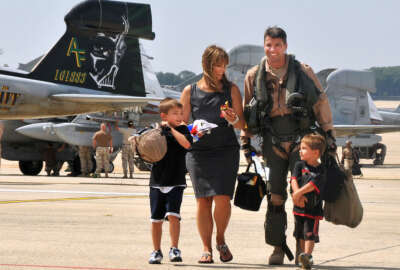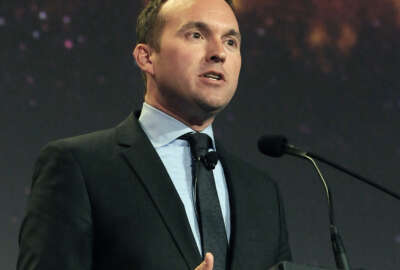
Army’s nonprofit arm now helping soldiers with daycare costs
Soldiers can borrow up to $500 a month after a move to help with daycare costs.
Best listening experience is on Chrome, Firefox or Safari. Subscribe to Federal Drive’s daily audio interviews on Apple Podcasts or PodcastOne.
A nonprofit relief wing of the Army is providing assistance to soldiers who are moving to a new area and finding daycare too expensive.
Army Emergency Relief started a program on Feb. 1 that can provide soldiers who have recently conducted a permanent change of station with up to $500 a month for childcare for three months. That money comes in the form of an interest-free loan, a grant or a mixture of the two depending on economic circumstances.
“Even though it says emergency relief in our name, it doesn’t mean we do just emergencies,” Raymond Mason, director of AER, told Federal News Network. “No matter what financial challenge you are facing you can still come to AER.”
The program’s funds provide money for families that have to pay money out-of-pocket above what the Army already provides for a daycare.
“There was a meeting between some senior Army individuals and the issue was brought up of soldiers paying out-of-pocket for childcare fees in some of these high cost areas,” Glen Wellman III, AER emergency assistance administrator, said. “The goal is to try to help soldiers who do a permanent change of station and they go to a location where they have they out-of-pocket expenses. We try to hold them over until a spouse can find employment or they can adjust their budget.”
Mason said the Army found the average out-of-pocket cost was about $250, so AER decided to double it to ensure costs were met. He added that AER will keep an eye on that number to see if it needs to be increased.
Read more Defense news
Since 1942, AER has provided financial assistance to soldiers.
“Some of the most typical things we assist with are emergency travel for soldiers who have a family emergency, we help with rent and deposit and car repairs,” Wellman said.
AER has helped more than 4 million soldiers since its creation.
AER does not get any funds from Congress, but rather from donations from soldiers, citizens and private entities.
According to the 2019 Blue Star Families Military Family Lifestyle Survey, 50% of service members reported it was difficult to find a childcare provider they could afford.
DoD is currently down about 9,000 childcare workers, which is leading to a shortage of care and to higher costs.
The Navy alone plans to hire 1,000 new childcare employees this year, and is budgeting for 4,000 next year.
Mason said slow hiring times due to security clearance backlogs are one of the reasons for the employee shortfall.
DoD recently reprioritized how it places children in daycare to give single and dual active duty service members more of a chance to find a spot to place their children.
Read more Workforce news
The memo, signed in February, also allows DoD to remove family with lower priority from childcare to make room for an active duty family if they have been waiting for 45 days or longer for a spot.
Top priority categories include single or dual active duty service members and active duty members with full-time working spouses. In this case, active duty also refers to reserve and National Guard members who are on duty or training status. Subsections below that include active duty service members with part-time working spouses and active duty service members with spouses in post-secondary education.
Single or dual DoD civilian employees will move to the second priority tier.
Active duty members of the Coast Guard, DoD civilians with a spouse in school or seeking employment or active duty service members with a non-working spouse will all drop to the third priority tier known as “space available patrons.”
Copyright © 2025 Federal News Network. All rights reserved. This website is not intended for users located within the European Economic Area.
Scott Maucione is a defense reporter for Federal News Network and reports on human capital, workforce and the Defense Department at-large.
Follow @smaucioneWFED
Related Stories






